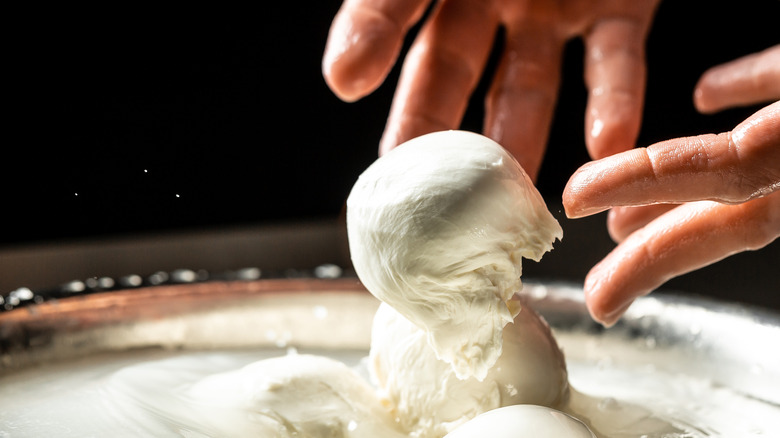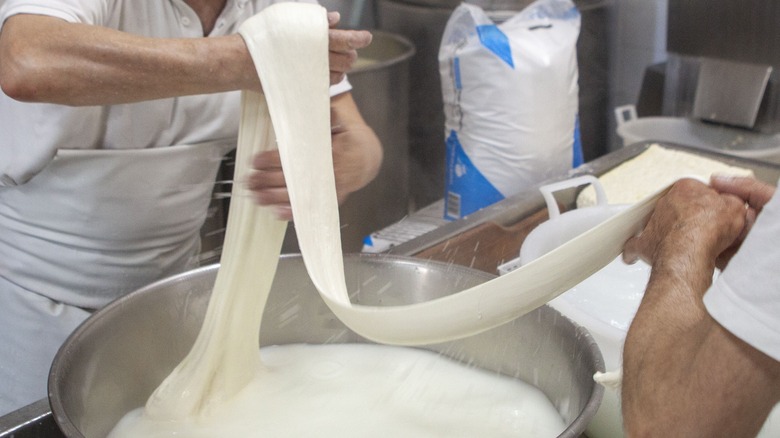How Mozzarella Really Got Its Name
When it comes to cheese, mozzarella is an absolute star. The sliceable curd cheese traditionally made from water buffalo milk has Southern Italian roots and is believed to have been eaten by first-century Romans, according to The Italian Tribune. With its milky, mild, smooth flavor and delicate, semi-soft character, mozzarella is a popular topping for pizzas, paninis, and pasta and is also commonly paired with tomatoes and basil in a refreshing Caprese salad recipe or eaten with a medley of olives and sparkling wine, as recommended by Crave Brothers Farmstead Cheese. It can even be eaten by its good ol' self, as it's a rich source of calcium, protein, and probiotics, per Healthline.
Mozzarella is both fun to eat and fun to say. But where, exactly, did the term "mozzarella" come from? The Italian Tribune reports that the word was first published in a 1570 cookbook written by a man named Bartolomeo Scappi, a famous chef who rose to prominence during the Italian Renaissance. As it turns out, the etymology of one of the most admired dairy products on earth is as fascinating as the cheese is delicious.
Mozzarella is named for its unique cheesemaking process
If you've ever seen a cheesemaker in action, it's pretty mesmerizing. Many of the cheeses we know and love are prepared in a similar fashion, and these methods typically involve standardization, pasteurization, then separating the milk curds from the whey before they're shaped and brined, according to the National Dairy Council. Specifically, when it comes to making this essential Italian food, the process hasn't changed a whole lot over the past several millennia. And this ancient, intricate, tested process is what gave the creamy-tasting, white-colored cheese its name.
For starters, "mozzare" is an Italian term for "to separate," according to The Italian Tribune. This makes sense since mozzarella is made by continuously hand-stretching the curds, which are naturally elastic, and cutting them into their iconic ball shape. For the most part, this same operation has been used since the early days of mozzarella, but new technologies and scientific discoveries, including modern refrigeration and machinery, have made things a bit easier, per Mozzarella Company. (For example, machines rather than hands might shape the curds into balls.) To continue our Italian language lesson, "pasta filata" — which means "spun paste" — is the expression used to describe the technique for making mozzarella.

